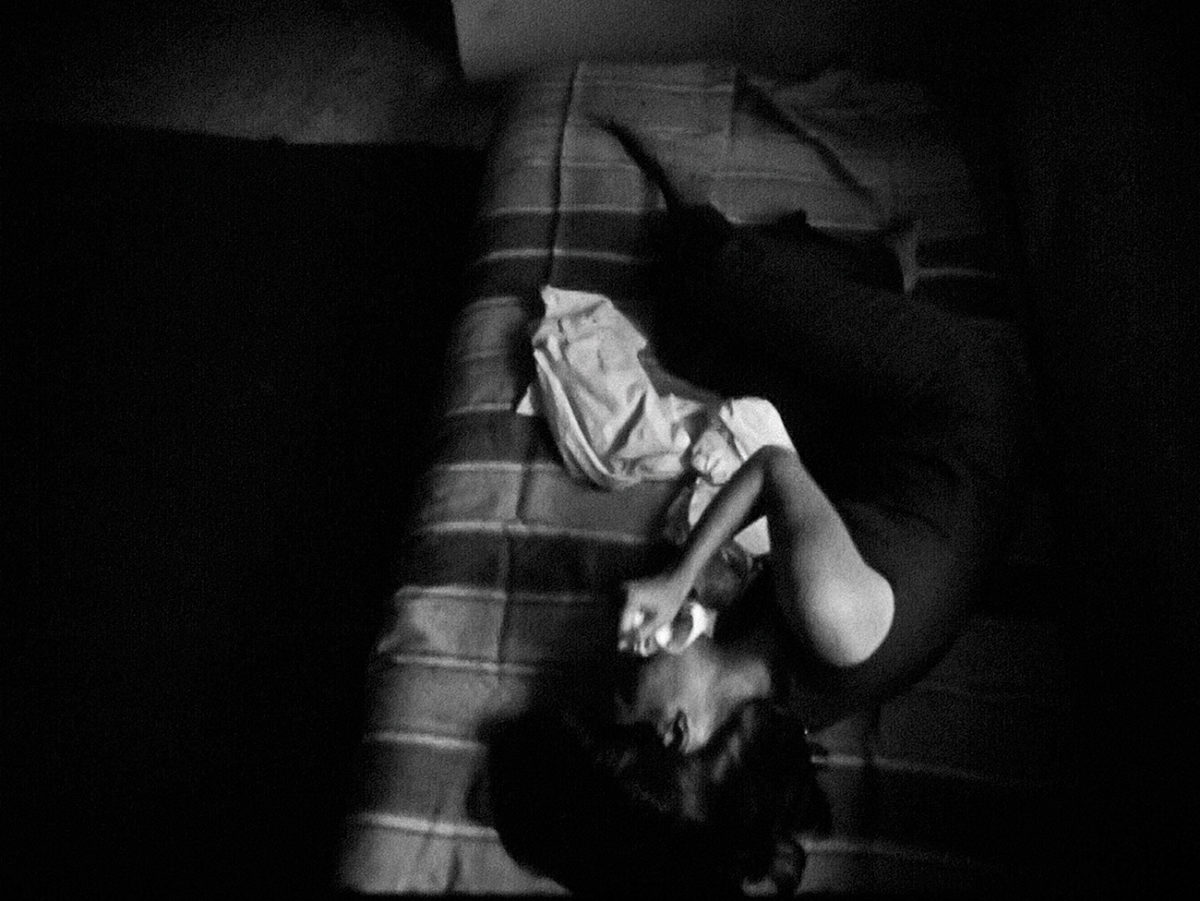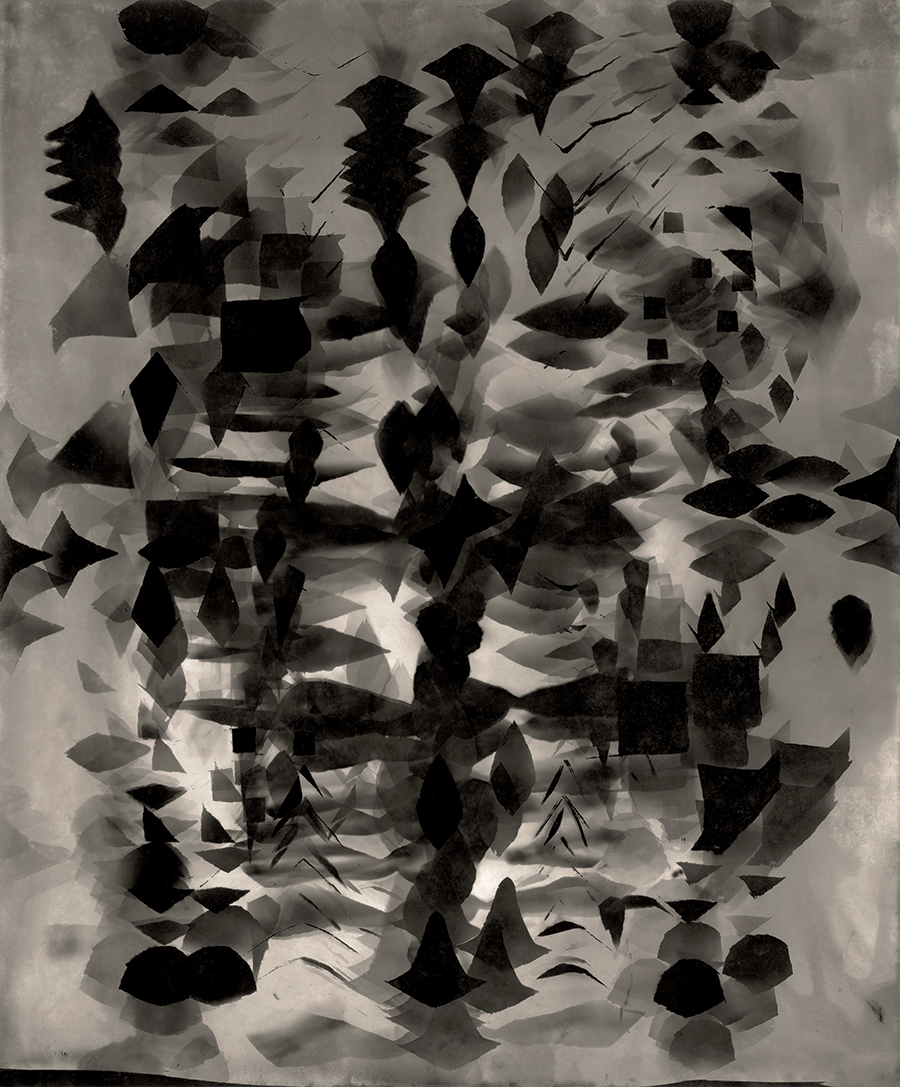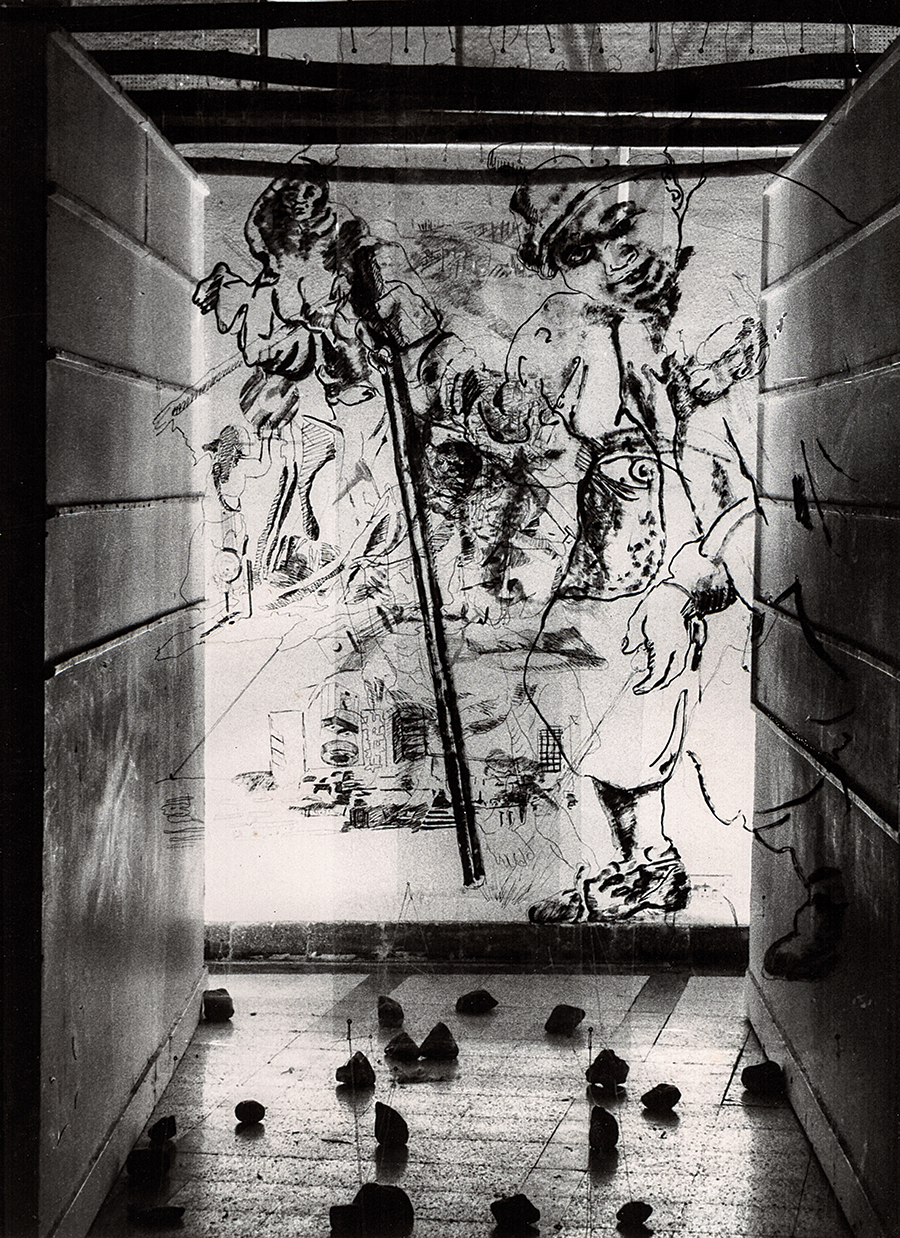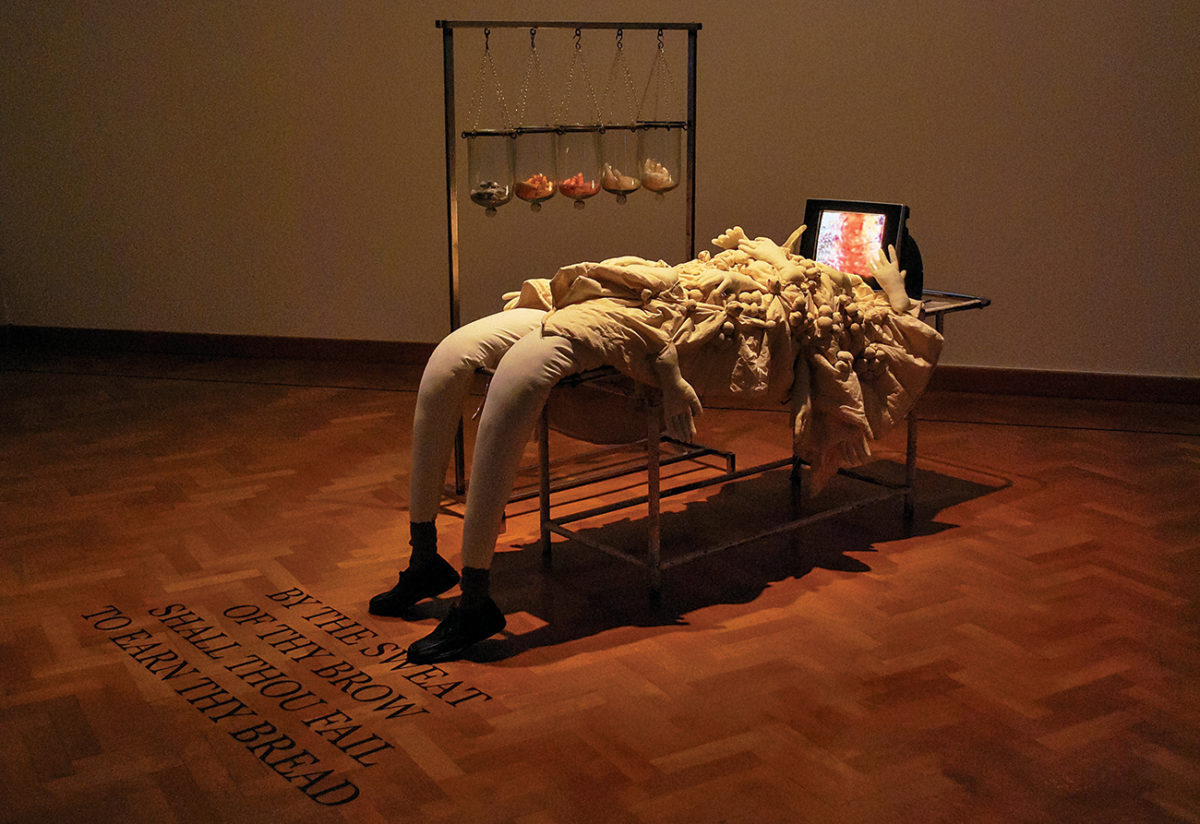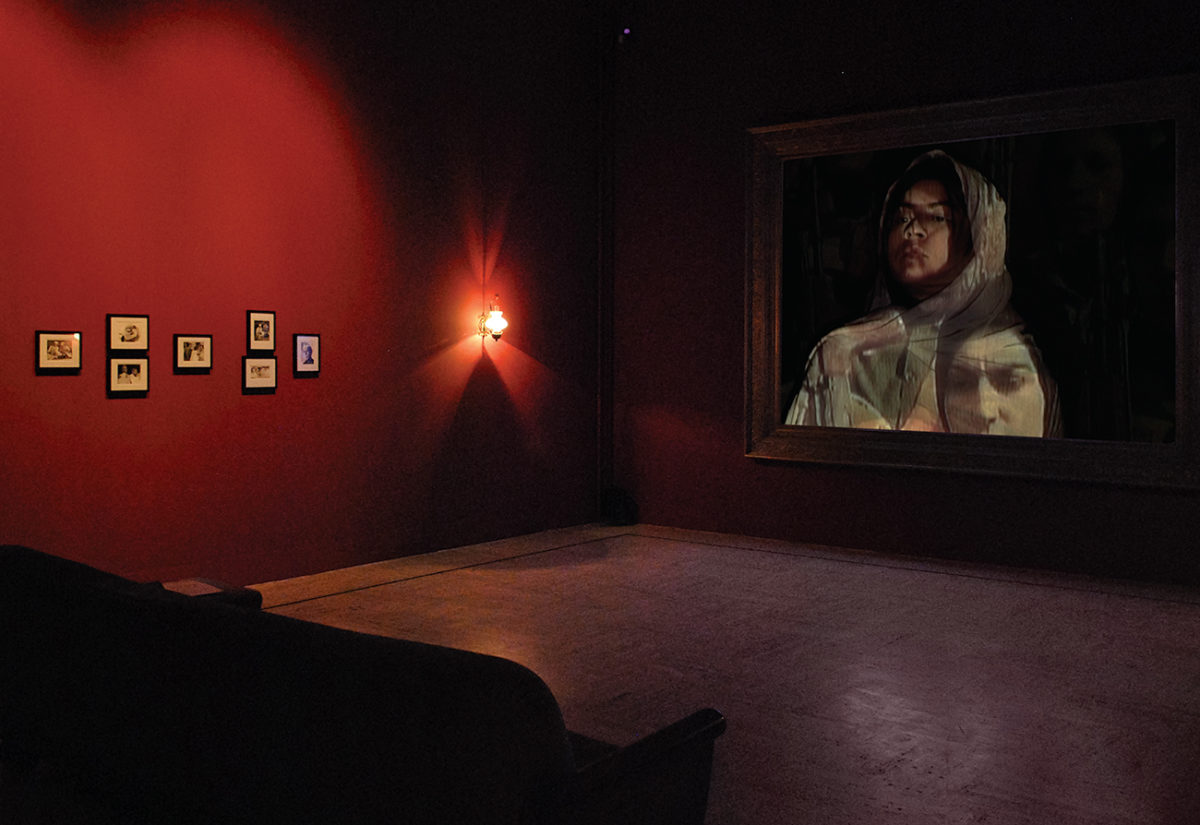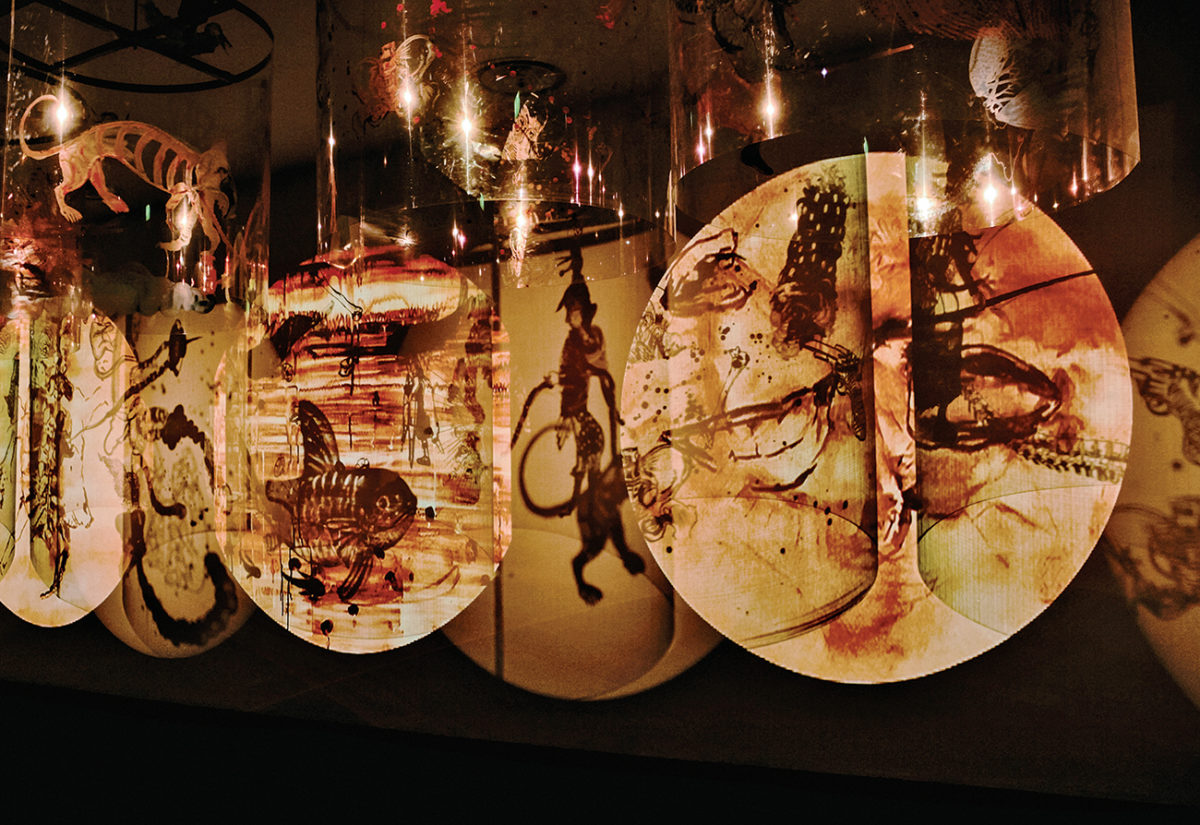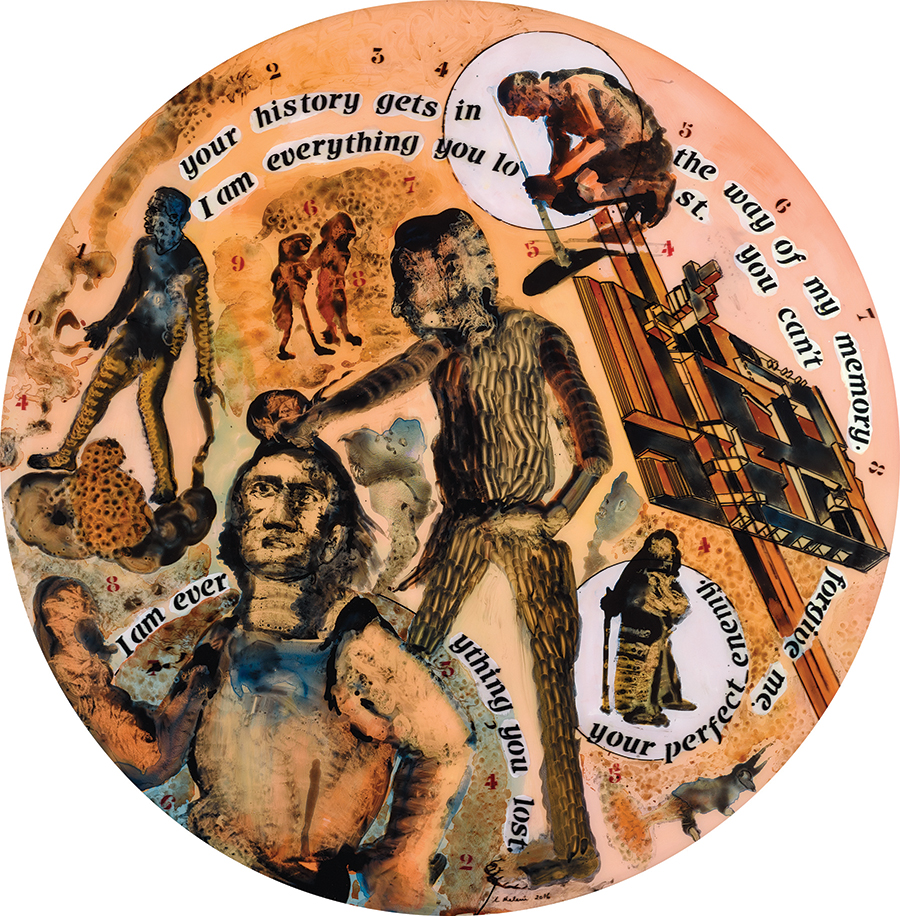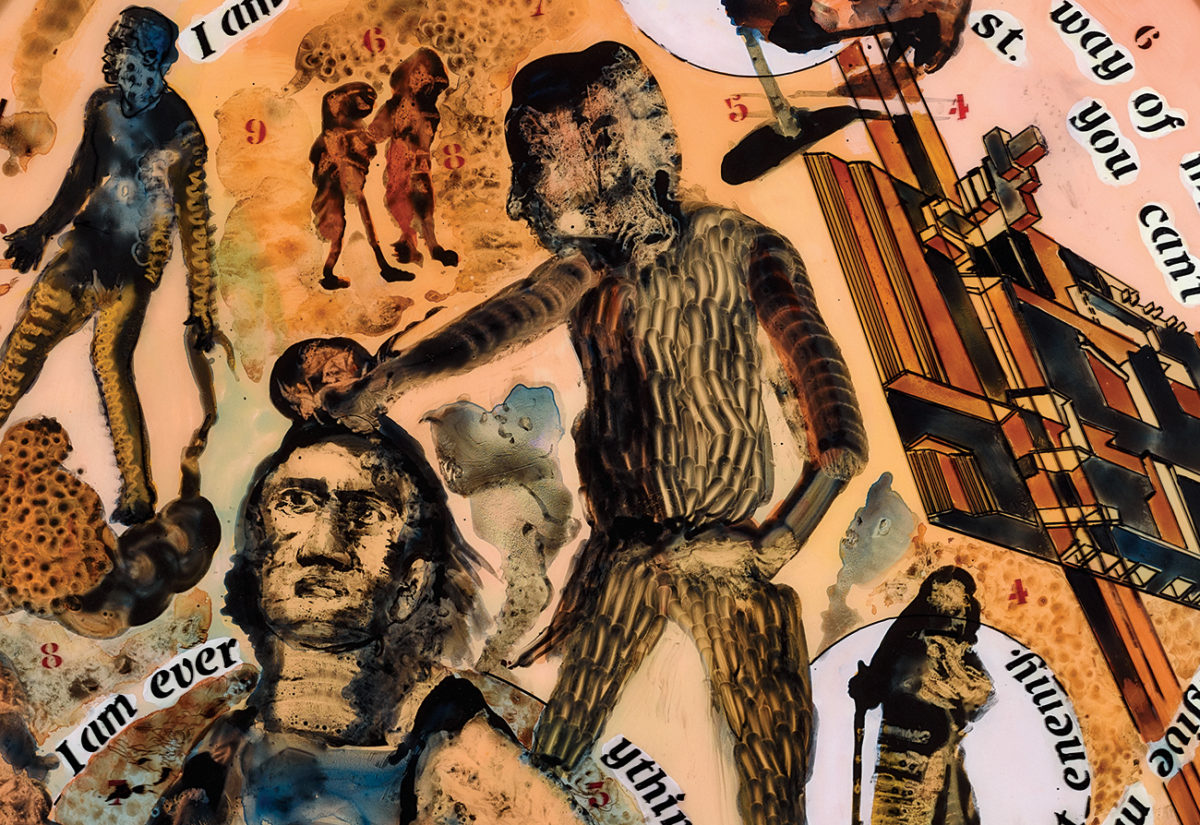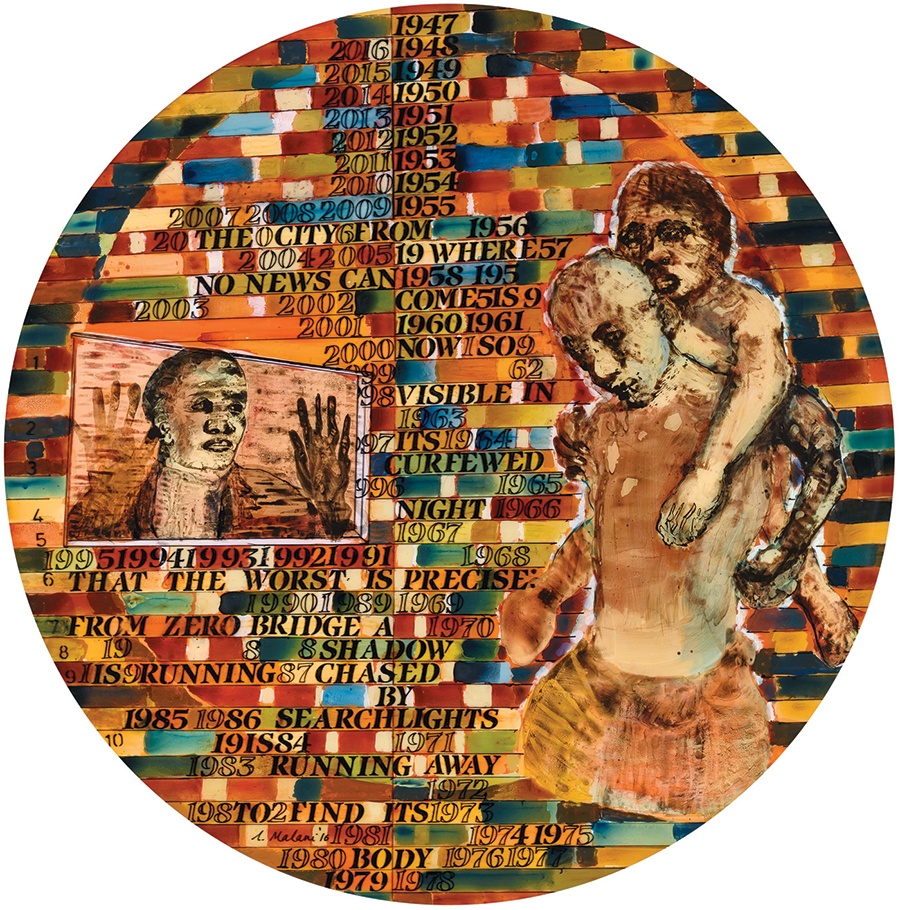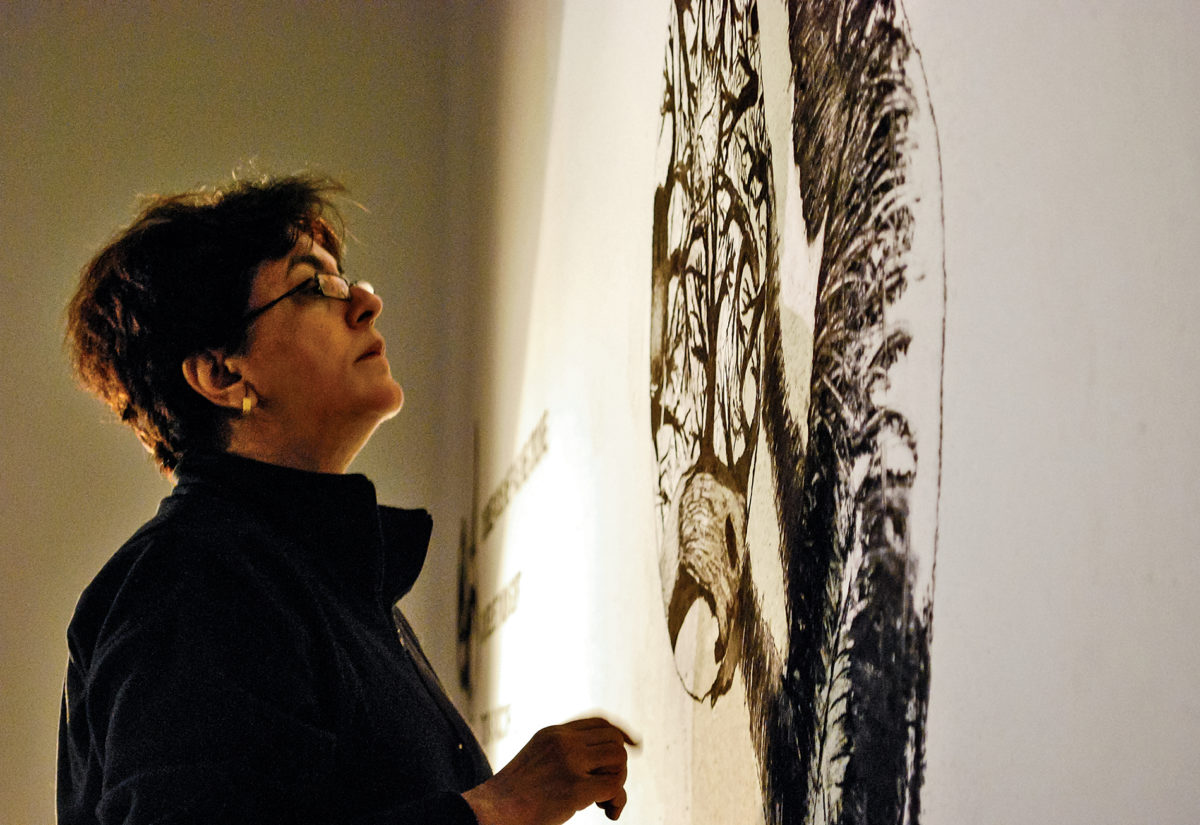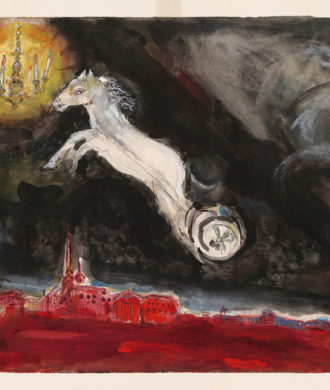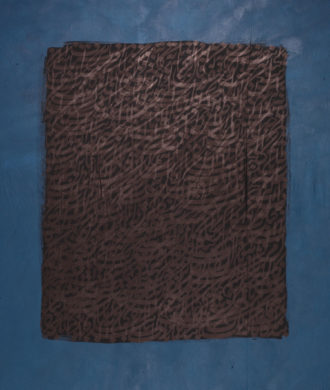Nalini Malani’s First Retrospective in France and Italy
The Rebellion of the Dead Retrospective 1969-2018.
From 18 October 2017 – 8 January 2018.
In a unique collaboration, the Centre Pompidou and Castello di Rivoli are staging Indian artist Nalini Malani’s first retrospective in France and Italy. To be presented in Paris in 2017-2018, then in Rivoli in 2018, this retrospective in two parts selectively covers fifty years of creativity. In the Centre Pompidou exhibition, the artist presents works from 1969-2018, including her latest painting series All We Imagine as Light and the site-responsive Wall Drawing/Erasure Performance Traces.
TITLE: Onanism
VIDEO: black and white 16 mm film transferred on digital medium, 03:52 min.
MEDIUM:Centre Pompidou, Musée National d’art Moderne, Paris
YEAR: 1969
PHOTO:© Nalini Malani
Apprehending Nalini Malani’s work from both a non-chronological and a thematic angle, the exhibitions tackle the various concepts underlying her œuvre: utopia, dystopia, her vision of India and the role of women in the world. The result of the Partition of India in 1947 has had a life long traumatic effect on Malani’s family, whose experiences as refugees continue to inform her art practice.
TITLE: Utopia
VIDEO: 16 mm black and white film and 8 mm colour stop-motion animation film, transferred on digital medium, double video projection, 3:49 min.
MEDIUM:Centre Pompidou, Musée National d’art Moderne, Paris
YEAR: 1969 – 1976
PHOTO:© Nalini Malani
Her explorative investigation of female subjectivity and her profound condemnation of violence – in all its insidious forms – is a constant reminder of the vulnerabilities and precariousness of life and human existence. In her art, she places inherited iconographies and cherished cultural stereotypes under pressure. Her point of view is unwaveringly urban and internationalist and unsparing in its condemnation of a cynical nationalism that exploits the beliefs of the masses. Her work exists as a temporal and corporeal confrontation of the past, present, and future; a dynamic synthesis of memory, fable, truth, myth, trauma, and resistance. In this way, the artist has constructed a remarkable new language of imagination and form, and of phenomena and meaning.
TITLE: Nalini Malani making in situ Wall Drawing
MEDIUM: Musée cantonal des Beaux-Arts, Lausanne
YEAR: 2010
PHOTO:© Musée cantonal des Beaux-Arts, Lausanne
Catalogue Extracts…
SOPHIE DUPLAIX
Interview With Nalini Malani
If Humankind Wants to Survive the Twenty-first Century…
Nalini Malani: My own art was from the very start female-oriented. I believe this is natural, a given, as women have a completely different relationship to the body than men. And women also hold a different position in society, anywhere in the world, compared to men. The female protagonists manifest themselves already in my early experimental black and white films such as Still Life (1969), Onanism (1969) and Taboo (1973). In my later works, I often work with existing female characters from mythology, literature or history, to reintroduce male-dominated history from a female point of view. This one can see in paintings such as Sita/Medea (2006), Talking about Akka (2007) and Cassandra (2009) or my video-based works such as Mother India: Transactions in the Construction of Pain (2005) and Remembering Mad Meg (2007). This feminist approach and commitment will continue for the rest of my life. Over the years, women in selective societies have acquired a degree of equality with men, but still today there is too much left wanting. For me, understanding the world from a feminist perspective is an essential device for a more hopeful future, if we want to achieve something like human progress.
It is clear that we have followed for too long a linear patriarchy that is coming to an end, but stubbornly wants to assert, “it is still the only way” Or, if I wanted to state it more dramatically, I think that we desperately need to replace the alpha male with matriarchal societies, if humankind wants to survive the twenty-first century…
Click on the Images for Credit Details
MIEKE BAL
Exposing Broken Promises :
Nalini Malani’s Multiple Exposures
Within Malani’s rich series of shadow plays, this one [Remembering Mad Meg] stands out in four respects. Here the projections that splice the images on the turning cylinders and cast their shadows are stop-motion animations, evoking four different short stories of subaltern women in line drawings. In the loop, coloured projected circles appear intermittently and interweave the images on the cylinders, making the shadows into superimpositions of paintings and drawings, bringing two of Malani’s media together. Secondly, there is an emphatic presence of female figures in this work. The cylinders and the projections confront us with a whirlwind of such figures that flash memories of readings and photographs, paintings and drawings that feel like an archive of subaltern girls and women, including babies and umbilical cords. Young girls, caught in a history of violence and poverty, one with a leg blasted off by a mine, another, Alice-like, skipping rope as an innocent version of reiteration; a young homeless girl or protester peeing in public space, signifying poverty but also recalling the prestigious precedent of Rembrandt that we will see on the other side of the exhibition. Goya-like torture and execution; a monster morphing into a woman, or the opposite, the series goes on.
The emphasis on “remembering” as an active verb in the progressive form leads, thirdly, to the interpretation of memory as active and ongoing. Here, the act of memory needed is close to the subject because it is that of the victim-participant, the person who is so deeply embedded in a culture of violence that she inevitably becomes an accomplice. Forgetting this is the deeper cause of the endless repetition of violence – the circular form is there to remind us of this.
Victimisation, collusion, and forgetting, together make up the state of human beings incarnated by the figure of Mad Meg. The work’s title prompts us to remember this figure on an ongoing basis. What must be remembered is not just how she was hurt but what she did as well – how her violation turned her into a “mutant,” another key figure in Malani’s work, contaminated not only physically, but also morally. The fourth distinguishing feature is the centrality of that singular figure emblematic of violence undergone and perpetrated, brought to us in painting. No other shadow play has a “main character.” This centrality is not based on the individualism of Western novels and films but embodies the multi-directionality of both the layered narrative mode of the images and the movement between times and cultures that this central figure of Meg encourages.
These movements, turning between forms of violence, make up the turbulence of the work. As the spine of the show, the uproar contaminates both side wings. Between small narratives and the archival, between myth and modernity, and between visuality and the thought-image (my shorthand for political art), Meg, and the artist who created this shadowy version of her wanders through the world’s storage rooms collecting triggers for acts of memory. The figure raises this question about herself: is she mad, furious, or the one because of the other? If the latter, does violence lead to madness, and what has the way we look at her to do with that state? These are all aspects of the underlying question about what needs to be remembered, and how. Hence, the ineluctably immersive installation.
Click on the Images for Credit Details
Click on the Images for Credit Details
JOHAN PIJNAPPEL
The Missing Link :
Nalini Malani’s Experimental Films From 1969 – 1976
Malani’s early films were made on the brink of two historical time frames. India’s post-Partition history has often been divided into two phases, that is, from 1947 to 1969, the period of secular nationalism advocated by Nehru, which was based on a politics of integration, and from 1970 to the present day, which has witnessed the increasing importance of Hindu nationalism. In Still Life, Onanism, and Dream Houses, all from 1969, we see the filmic works of a young artist, a woman who believes and fights for the expansion of freedom and progress through the “woman’s voice,” as embodied in Indian modernity. With this Malani was far ahead of her time, and it took almost another thirty years before we saw similar female voices speaking up in Indian video art. Unfortunately, modernity became an incomplete process in India. Post-1970, as shown in Taboo, Malani’s idealism was dealt a harsh blow with evidence of continuing religious restrictions against women, and both in her Bandra slum project and Utopia the disappointment lies in the failure of modernity to deliver its promises of equality and betterment for all. However, as the poet and writer Adil Jussawalla noted in 1973, the women in Malani’s paintings are not passive: “What is new is that these women fight back. They will not watch and wait and endure with their large sad eyes as women have been shown to be doing ever since Amrita Sher-Gil.”
TITLE: Nalini Malani making in-situ Wall Drawing
MEDIUM: Musée cantonal des Beaux-Arts, Lausanne
YEAR: 2010
PHOTO: © Musée cantonal des Beaux-Arts, Lausanne

